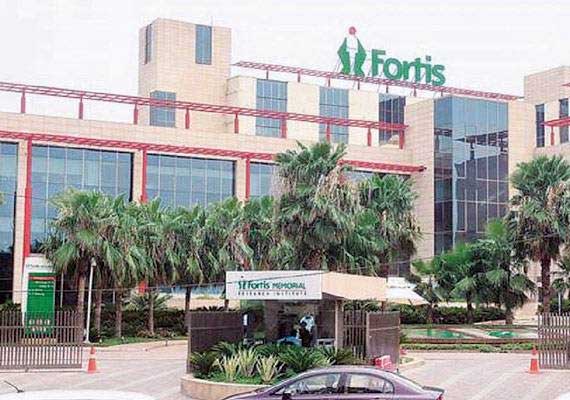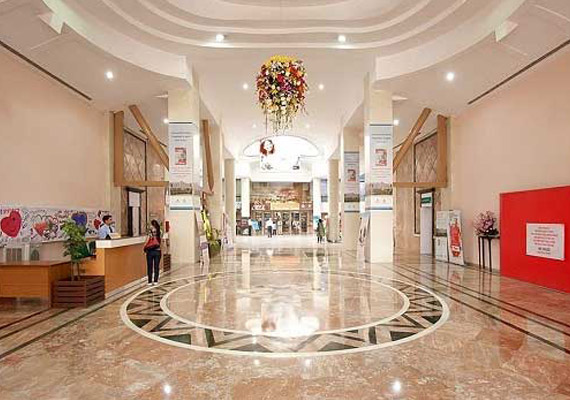Stapedectomy Treatment in India
treatment
starting from
Introduction:
Stapedectomy is a surgical procedure aimed at treating otosclerosis, a condition that affects the small bone in the middle ear known as the stapes. Otosclerosis is characterised by abnormal bone growth in the middle ear, leading to hearing loss and, in some cases, tinnitus (ringing in the ears). Stapedectomy involves removing a portion of the stapes bone and replacing it with a prosthetic device to improve sound transmission and restore hearing. This article provides a comprehensive overview of stapedectomy, including its symptoms, causes, diagnosis, treatment, cost in India, and concludes with an assessment of its impact on patients' hearing and quality of life.
Symptoms of Otosclerosis:
Otosclerosis primarily affects hearing, and its symptoms may gradually worsen over time. Some common symptoms of otosclerosis include:
1. Gradual Hearing Loss: Hearing loss in otosclerosis often starts with a gradual decline in hearing ability, usually affecting one ear initially and later progressing to both ears.
2. Tinnitus: Many individuals with otosclerosis may experience tinnitus, characterised by a constant or intermittent ringing, buzzing, or humming sound in the affected ear.
3. Balance Issues: In some cases, otosclerosis may cause mild balance problems, leading to occasional dizziness or vertigo.
4. Sensitivity to Loud Sounds: Some patients with otosclerosis may become sensitive to loud noises, which can worsen their hearing experience.
Causes of Otosclerosis:
The exact cause of otosclerosis is not fully understood, but it is believed to be related to a combination of genetic and environmental factors. Some potential causes and risk factors include:
1. Genetic Predisposition: There is evidence to suggest that otosclerosis may have a genetic component, as it often runs in families.
2. Hormonal Changes: Otosclerosis may be influenced by hormonal changes, as it is more common in women and can worsen during pregnancy due to hormonal fluctuations.
3. Viral Infections: Some researchers speculate that viral infections may trigger otosclerosis in genetically susceptible individuals.
4. Age: Otosclerosis typically affects individuals between the ages of 15 and 45, with symptoms becoming more noticeable as they age.
Diagnosis of Otosclerosis:
Diagnosing otosclerosis involves a thorough examination of the patient's medical history, a physical examination, and several specialised tests, including:
1. Audiometry: Hearing tests, such as pure-tone audiometry and speech audiometry, are used to assess the degree and type of hearing loss.
2. Tympanometry: Tympanometry measures the movement of the eardrum and helps assess middle ear function.
3. Imaging Studies: Imaging techniques such as CT scans may be used to visualize the middle ear and identify any abnormal bone growth characteristic of otosclerosis.
Treatment Options - Stapedectomy:
Stapedectomy is considered the gold standard treatment for otosclerosis, particularly in cases where hearing loss is significant and does not respond to other forms of treatment. The procedure involves the following steps:
1. Anesthesia: Stapedectomy is typically performed under local or general anesthesia, ensuring the patient's comfort during the procedure.
2. Accessing the Middle Ear: The surgeon gains access to the middle ear through a small incision behind the ear.
3. Removal of the Stapes: A small piece of the stapes bone is removed to create space for the prosthetic stapes replacement.
4. Prosthetic Stapes Placement: A prosthetic device, such as a piston or wire, is then carefully inserted to replace the removed portion of the stapes bone. This device helps improve sound transmission to the inner ear.
5. Closure of the Incision: Once the prosthetic stapes is in place, the incision is closed, and the patient is allowed to recover.
Recovery and Rehabilitation:
After the stapedectomy procedure, patients may need to take certain precautions to ensure proper healing. Avoiding activities that may put pressure on the ear, such as diving or flying, is typically advised for several weeks. Audiological follow-up appointments are essential to monitor hearing improvement and adjust any necessary settings on the prosthetic device.
Cost of Stapedectomy in India:
The cost of stapedectomy in India can vary based on several factors, including the hospital's location, the surgeon's expertise, the type of prosthetic device used, and the patient's overall health condition. On average, the cost of a stapedectomy procedure in India can range from Rs. 40,000 to Rs. 60,000 rupees. Patients should consult with their healthcare provider to understand the overall cost, which may include preoperative evaluations, postoperative care, and potential complications.
Conclusion:
Stapedectomy is a revolutionary surgical procedure that offers hope to individuals suffering from hearing loss caused by otosclerosis. By replacing the damaged stapes bone with a prosthetic device, stapedectomy can significantly improve a patient's hearing and enhance their overall quality of life. Early detection and diagnosis of otosclerosis are essential for timely intervention and successful treatment outcomes. With advances in surgical techniques and rehabilitation methods, stapedectomy continues to be a safe and effective option for individuals seeking to regain their sense of hearing and restore their auditory health. By providing comprehensive care and support to patients undergoing stapedectomy, healthcare professionals can help improve their quality of life and facilitate their successful reintegration into society. With ongoing research and advancements in medical technology, the prospects for individuals with otosclerosis continue to improve, offering hope for a better future despite the challenges they face.
How It Works
Need help in organizing medical travel to India?










